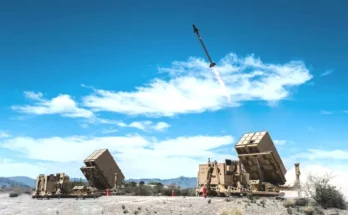
All good things come to an end. The Banana Splits show, March Madness, and summer vacation come to mind. Their time with us is finite. (Tab soda, Earth shoes, and Nehru jackets hung around too long.) Now, the HELLFIRE is joining this list. Even as this missile takes part in yet another war, the end of its production run may finally be within sight.
The U.S. began HELLFIRE production in 1980 with the intention of destroying tanks, but the missile won fame through its participation in the “War on Terror.” Carried by MQ-9 Reaper unmanned air vehicles (UAVs), the HELLFIRE and Brimstone hit targets around the world. (Does anyone else believe the naming of these systems is NOT a coincidence?) This success came just as the U.S. considered an end to HELLFIRE procurement. Instead, HELLFIRE saw a significant surge in production: from 400 in 2003 to over 5,000 in 2009. Makes you wonder, did Osama bin Laden invest in U.S. defense stocks? Production of HELLFIRE has exceeded 170,000 missiles.
Now, the HELLFIRE is operational in Ukraine, engaging targets it was originally designed to defeat instead of destroying pickup trucks full of wannabe terrorists. Yet, history is unlikely to repeat itself (at least this time). Any spectacular combat success gained by HELLFIRE in Ukraine will not stop its eventual production conclusion.
The United States is investigating possible replacements. Originally, the Joint Air-to-Ground Missile (JAGM) was to meet this need, but problems arose. A further enhanced version of JAGM is in line to finally replace the HELLFIRE. Pity, unleashing Brimstone and JAGM on an opponent doesn’t have the same ring.
Forecast International’s Missile Forecast provides global long-range forecasts for a wide range of missiles, including air-to-air, surface-to-air, strike, anti-armor, surface-to-surface, anti-ship, and anti-radiation systems, both developmental and in production. An annual subscription includes 134 individual reports, most with a 10-year or 15-year unit production forecast. For more information, click here
For more than 35 years, Larry has been involved in research and analytical work for various Forecast International projects. He has contributed to the Airborne Electronics Forecast and was chief editor on the World Aerospace Weekly newsletter. Larry was directly responsible for the creation of World Weapons Review, a biweekly industry market research publication specializing in weapon systems and related material. He was the creator of Unmanned Vehicles Forecast, launched to cover the growing market for civil and military drones, and was involved in the development of the Airborne Retrofit & Modernization Forecast service. He is currently responsible for the Missile Forecast and for FI's two Unmanned Vehicles Forecast services – Airborne Systems and Land & Sea Systems.




